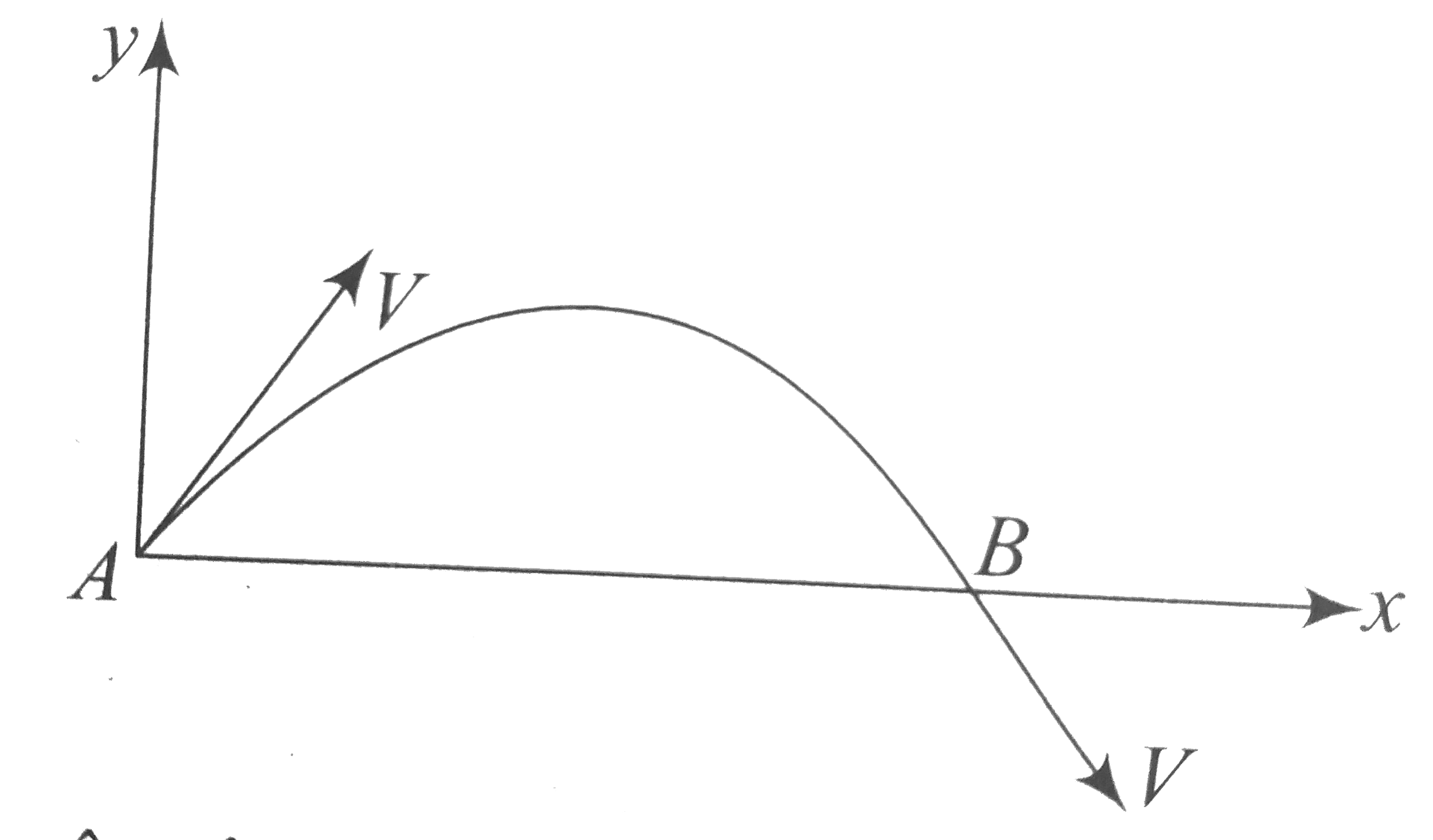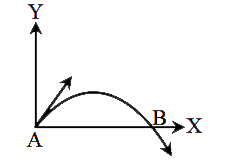At time t=0, particle A is at (1m,2m) and B is at (5m,5m). Velociyt of B is (2ˆi+4ˆj)m/s Velocity of particle A is √2v) at 45∘ with x-axis. A collides with B .
Value of v is ………..m/s
5
15
25
10
The correct Answer is:D
To solve the problem, we need to find the value of v such that particle A collides with particle B. Here’s a step-by-step breakdown of the solution:
Step 1: Identify the Initial Positions
- Particle A is at the coordinates (1m,2m).
- Particle B is at the coordinates (5m,5m).
Step 2: Determine the Velocities
- The velocity of particle B is given as →VB=2^i+4^jm/s.
- The velocity of particle A is given as √2v at an angle of 45∘ with the x-axis.
Step 3: Calculate the Components of Velocity for A
Since particle A moves at an angle of 45∘:
- The horizontal component of the velocity VAx=√2v⋅cos(45∘)=√2v⋅1√2=v.
- The vertical component of the velocity VAy=√2v⋅sin(45∘)=√2v⋅1√2=v.
Thus, the velocity vector for particle A is:
→VA=v^i+v^j
Step 4: Calculate the Relative Velocity
To find the relative velocity of A with respect to B:
→VAB=→VA−→VB=(v−2)^i+(v−4)^j
Step 5: Determine the Direction of Approach
For A to collide with B, the direction of the relative velocity must point towards B. We can find the slope of the line connecting A and B:
- The difference in y-coordinates: 5−2=3
- The difference in x-coordinates: 5−1=4
Thus, the slope (or tangent of the angle) is:
tan(θ)=34
Step 6: Set Up the Equation
The slope of the relative velocity must equal the slope of the line connecting A to B:
VAyVAx=v−4v−2=34
Step 7: Cross Multiply and Solve for v
Cross-multiplying gives:
4(v−4)=3(v−2)
Expanding both sides:
4v−16=3v−6
Rearranging gives:
4v−3v=16−6
Thus:
v=10m/s
Final Answer
The value of v is 10m/s.
---
- Particle A is at the coordinates (1m,2m).
- Particle B is at the coordinates (5m,5m).
- The velocity of particle B is given as →VB=2^i+4^jm/s.
- The velocity of particle A is given as √2v at an angle of 45∘ with the x-axis.
Since particle A moves at an angle of 45∘:
- The horizontal component of the velocity VAx=√2v⋅cos(45∘)=√2v⋅1√2=v.
- The vertical component of the velocity VAy=√2v⋅sin(45∘)=√2v⋅1√2=v.
→VA=v^i+v^j
To find the relative velocity of A with respect to B:
→VAB=→VA−→VB=(v−2)^i+(v−4)^j
For A to collide with B, the direction of the relative velocity must point towards B. We can find the slope of the line connecting A and B:
- The difference in y-coordinates: 5−2=3
- The difference in x-coordinates: 5−1=4
tan(θ)=34
The slope of the relative velocity must equal the slope of the line connecting A to B:
VAyVAx=v−4v−2=34
Cross-multiplying gives:
4(v−4)=3(v−2)
Expanding both sides:
4v−16=3v−6
Rearranging gives:
4v−3v=16−6
Thus:
v=10m/s
The value of v is 10m/s.
Topper's Solved these Questions
- KINEMATICS 1BOOK - DC PANDEY ENGLISHCHAPTER - KINEMATICS 1EXERCISE - MATCH THE COLUMN
10 Videos
- KINEMATICS 1BOOK - DC PANDEY ENGLISHCHAPTER - KINEMATICS 1EXERCISE - INTEGER_TYPE
15 Videos
- KINEMATICS 1BOOK - DC PANDEY ENGLISHCHAPTER - KINEMATICS 1EXERCISE - MCQ_TYPE
27 Videos
- KINEMATICSBOOK - DC PANDEY ENGLISHCHAPTER - KINEMATICSEXERCISE - INTEGER_TYPE
10 Videos
- LAWS OF MOTIONBOOK - DC PANDEY ENGLISHCHAPTER - LAWS OF MOTIONEXERCISE - Medical entrances gallery
39 Videos
Similar Questions
At time t=0, particle A is at (1m,2m) and B is at (5m,5m). Velocity of B is (2ˆi+4ˆj)m/s Velocity of particle A is √2v) at 45∘ with x-axis. A collides with B .
Time when A will collide with B is …….second.
View SolutionAt time t=0, a particle is at (−1m,2m) and at t=2s it is at (−4m,6m). From this we can conclude that in the given time interval.
View SolutionThe velocity of a projectile at the initial point A is (2ˆi+3ˆj)m/s. Its velocity (in m/s) at point B is

View SolutionThe velocity of a projectile at the initial point A is (2ˆi+3ˆj)ms. It's velocity (in m/s) at point B is -

View SolutionA particle is moving in x-y p1ane.At time t=0, particle is at (1m,2m) and has velocity (4ˆi+6ˆj)m/s. At t=4s, particle reaches at (6m,4m) and has velocity (2ˆi+10ˆj)m/s. In the given time interval, find
(a) average velocity,
(b) average acceleration and
(c) from the given data, can you find average speed?
View SolutionVelocity of a particle is given as v=(2t2−3)m/s. The acceleration of particle at t = 3s will be :
View SolutionAcceleration of a particle is given by
a=1/V
Where V is the velocity . Find
(i) Velocity of particle at time t, given that v = 10 m/s at t = 0.
(ii) Velocity of particle when its position is x, given that speed is 3 m/s at x = 0.
View SolutionVelocity of a particle at any time t is v=(2ˆi+2tˆj)m/s. Find acceleration and displacement of particle at t=1s. Can we apply v=u+at or not?
View SolutionA particle is projected from ground with velocity 40√2m/s at 45∘. At time t=2s
View SolutionThe velocity time relation of a particle is given by v =(3t2−2t−1)m/s Calculate the position and acceleration of the particle when velocity of the particle is zero . Given the initial position of the particle is 5m .
View Solution
